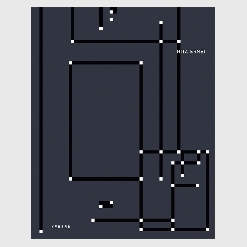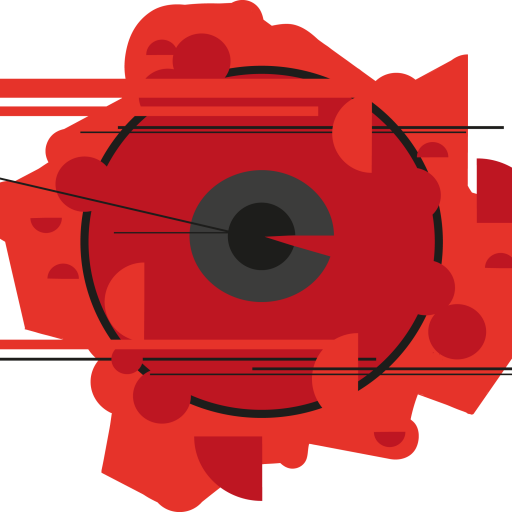Were it not for her stays abroad, were it not for her living and working in Sicily,  it is unlikely that the artist Rita Ernst would have encountered the work of the architect Mies van der Rohe. An additional facilitating link was required, however, in order to form this arc. Wita Noack, the director of the Mies van der Rohe Haus in Berlin, sparked off this encounter. She had been struck by Rita Ernst’s series of works Progetto Siciliano at an exhibition. She wanted to find out more about the Swiss artist, who lives in Zurich and in Trapani, Sicily. She subsequently followed Ernst’s unconventional creativity, which is characterized by an emphatically personal dealing with ordering systems. What interested Wita Noack about Progetto Siciliano above all was that the individual images of the cycle are based on floor plans of churches, cathedrals, palaces, and gardens. Finally she asked Rita Ernst quite concretely if she could imagine using floor plans by Mies van der Rohe as a basis for her oeuvre. The work took its course. collage
it is unlikely that the artist Rita Ernst would have encountered the work of the architect Mies van der Rohe. An additional facilitating link was required, however, in order to form this arc. Wita Noack, the director of the Mies van der Rohe Haus in Berlin, sparked off this encounter. She had been struck by Rita Ernst’s series of works Progetto Siciliano at an exhibition. She wanted to find out more about the Swiss artist, who lives in Zurich and in Trapani, Sicily. She subsequently followed Ernst’s unconventional creativity, which is characterized by an emphatically personal dealing with ordering systems. What interested Wita Noack about Progetto Siciliano above all was that the individual images of the cycle are based on floor plans of churches, cathedrals, palaces, and gardens. Finally she asked Rita Ernst quite concretely if she could imagine using floor plans by Mies van der Rohe as a basis for her oeuvre. The work took its course. collage
One thing developed out of another from the start. But Rita Ernst is no analyst; she does not proceed strategically. Everyday life with its discoveries and encounters, its events and contingencies, points the way. After an earthquake destroyed her apartment, she made the move from her first Italian home and studio in Bevagna, a town in Umbria that dates back to Antiquity, to Sicily. Good friends, whom she had met in Rome at the beginning of the 1980s, offered her a temporary home in a gardener’s lodge on a Sicilian estate.
During the first weeks, occasionally day after day, Rita Ernst monitored the Richter scale with the seismological records in Sicily, which is equally strongly susceptible to earthquakes. She drove up and down the island in her little red estate wagon. One of her trips took her to Gibellina. The little town, founded in the 14th century, was one of the localities that were never rebuilt following the serious earthquake in 1968. Today, La Nuova Gibellina is located a few kilometers to the west of the old village. collage
And the old Gibellina? A memorial stands to the destroyed little town. Over a lengthy period, the Italian painter and sculptor Alberto Burri (1915–1995) had the ruins of the historical town center filled in with white cement. The gigantic blocks, beneath which the foundation walls and rubble of the erstwhile houses are buried, are reminiscent of coffins. The entire man-high construction can be walked on. One follows the former streets and lanes, one movingly walks right along the ground plan of the lost Gibellina. Experience and experience-creation enter into a lively association–based on what lies concealed underneath.
How might Rita Ernst’s creative output have been received had she not moved to Zürich, but to the interior of Switzerland, where the concept of introspection was the order of the day at the start of the 1980s? collage
Would the creative output of Rita Ernst be perceived under different premises if she had been represented in 2013 at the exhibition “Rhythm in it. Vom Rhythmus in der Gegenwartskunst” at the Aargauer Kunsthaus gallery?
From a distance, Alberto Burri’s intervention looks like a monumental tortoise shell. Notionally, the closed chunks of cement could transform themselves into open receptacles. As in Rita Ernst’s images, associations, physical-haptic experiences, feelings, and remembered pictures repeatedly overlay one another again, they cut across one another and condense. In such a manner, ossified history transitions in an imagined simultaneity to layered moments. The collage-like coexistence sets fragmentary elements in relation to one another. According to multiple legends the back of a tortoise is supposed to have served as the foundation for newly created life.
Rita Ernst’s perception is directly unfiltered, with an even focus at the same time. She follows no notionally preconceived prerequisites. She picks up and displaces intuitively, she acts reactively, not semi-detachedly, even productively. She draws on specifications in her creative activity, which unfolds to a decisive extent in variations and serial thinking and takes a deliberately anti-hierarchical approach. collage
It is appropriate to speak of the cosmos of Rita Ernst, a cosmos whose operation in the context of a voluminously fluctuating surface tension prompts associations with a loom with warp and weft and warp beam, and with punch cards. The principle of linking can serve as a viewing aid, in order to describe the transformation and translation process experienced by the widest variety of media-based data influences. Even emotions deliver data, exactly as sounds, odors, or light situations do. Rita Ernst’s images exude a climate.
“It was never my aim to be a geometrically constructive artist”, Rita Ernst once declared. “But I have always been interested in rhythms such as seismographs, cardiographs, music rhythms. Or structures, provided by nature or created by human hand. I have always been fascinated by observing orderings: ants, traffic flows, waves, or birds in flight. Such as, how many clothes pins are hanging on the line, how many different colors are they, how can they be matched with one another?”
